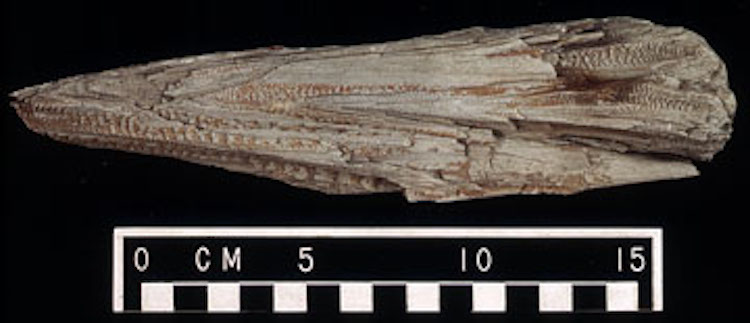Cone-in-cone

Cone-in-cone is a peculiar structure consisting of usually vertical nests of cones, one inside another, that are found either in thin beds or at the edges of large concretions. Some cones are less than an inch tall, and others are as much as 10 inches high. They have a ribbed or scaly appearance. Most cone-in-cone is composed of impure calcium carbonate, but occasionally the structure has been found in gypsum, siderite, and hard coal.
In Kansas, cone-in-cone is abundant in shale and sandstone in the Cretaceous-age Kiowa Formation. When eroded or weathered out, it breaks into small pieces that are easily mistaken for petrified wood. Although cone-in-cone may look like fossilized wood, it is an inorganic structure not consisting of living matter. Good specimens may be found in the banks of the Smoky Hill River in Ellsworth County and around Kanopolis Lake. Cone-in-cone also has been reported from limestones in Montgomery, Lyon, McPherson, Washington, and other counties.
Resources
Kansas Rocks and Minerals, Kansas Geological Survey Educational Series 2.